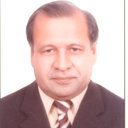Antimicrobial, Cytotoxic, Phytotoxic and Antioxidant Potential of Heliotropium strigosum Willd.
Ключевые слова
абстрактный
Background:Heliotropium strigosum Willd. (Chitiphal) is a medicinally important herb that belongs to the Boraginaceae family. Traditionally, this plant was used in the medication therapy of various ailments in different populations of the world. The aim of the study is to probe the therapeutic aspects of H. strigosum described in the traditional folklore history of medicines. Methods: In the present study, the dichloromethane crude extract of this plant was screened to explore the antimicrobial, cytotoxic, phytotoxic and antioxidant potential of H. strigosum. For antibacterial, antifungal and antioxidant activities, microplate alamar blue assay (MABA), agar tube dilution method and diphenyl picryl hydrazine (DPPH) radical-scavenging assay were used, respectively. The cytotoxic and phytotoxic potential were demonstrated by using brine shrimp lethality bioassay and Lemna minor assay. Results: The crude extract displayed positive cytotoxic activity in the brine shrimp lethality assay, with 23 of 30 shrimps dying at the concentration of 1000 µg/mL. It also showed moderate phytotoxic potential with percent inhibition of 50% at the concentration of 1000 µg/mL. The crude extract exhibited no significant antibacterial activity against Staphylococcus aureus, Shigella flexneri, Escherichia coli and Pseudomonas aeruginosa. Non-significant antifungal and radical scavenging activity was also shown by the dichloromethane crude extract. Conclusion: It is recommended that scientists focus on the identification and isolation of beneficial bioactive constituents with the help of advanced scientific methodologies that seems to be helpful in the synthesis of new therapeutic agents of desired interest.


